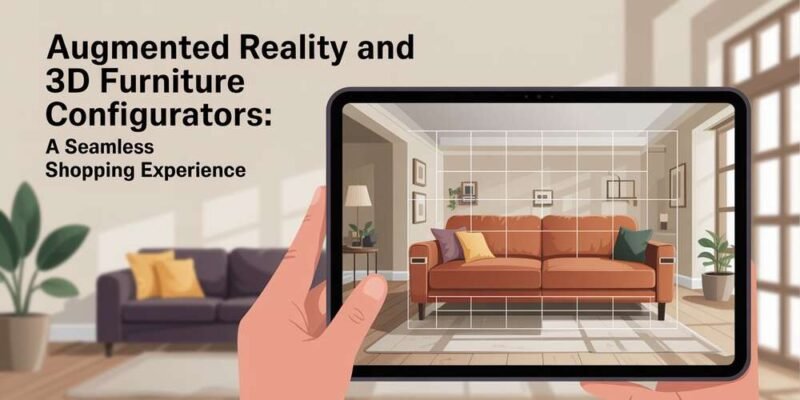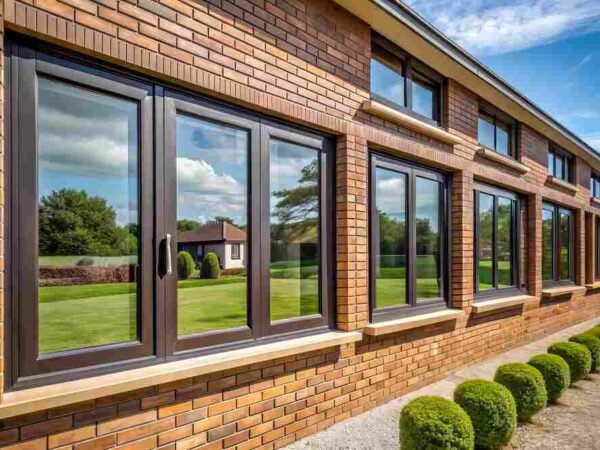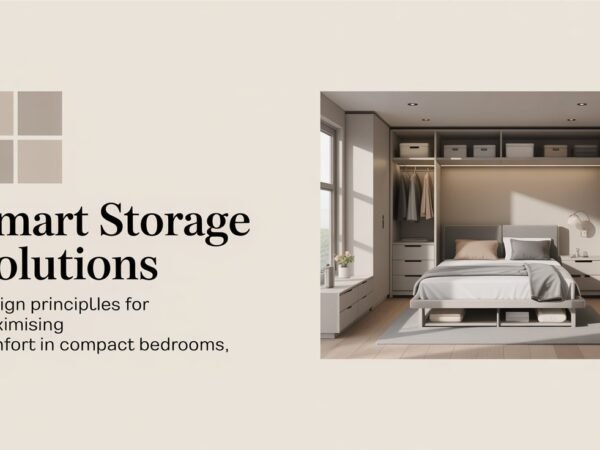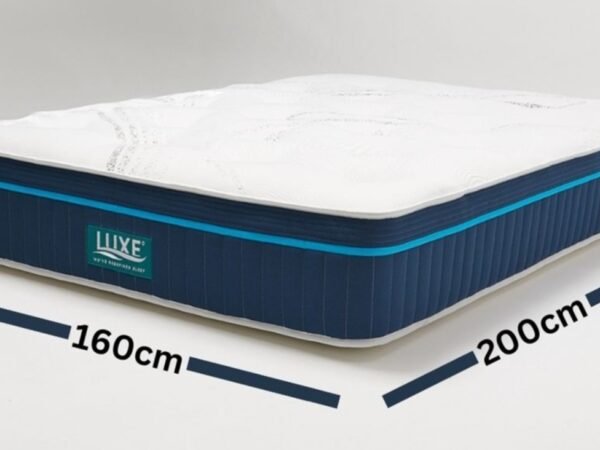The experience of looking for furniture has dramatically changed in the last few years. Thanks to the growth of online shopping, people can get many different things with just a few clicks. However, there are some problems with buying furniture online. It can be challenging for buyers to picture how a piece will fit in their space or look with the other things they already have. This is where Augmented Reality (AR) and 3D furniture configurators come in. They make shopping easier by letting you see and interact with items in real-time, which helps you make better decisions.
The Role of Augmented Reality in Furniture Shopping
With augmented Reality, digital information is added to the real world, making it more lifelike and interactive. During furniture shopping, AR lets people see how a piece of furniture will look in their home before buying it. Customers can use a smartphone or tablet to look at a 3D model of a piece of furniture correctly scaled and placed in their real-world surroundings.
This visual tool addresses one of the biggest challenges in online furniture shopping: the inability to interact with the product. Traditionally, buyers would have to rely on photos or vague descriptions, making assessing scale, color, and texture challenging. With AR, they can now see exactly how the furniture fits within their space, taking into account wall colors, room dimensions, and even lighting.
The most powerful thing about AR is that it can connect online shopping with shopping in stores. People can quickly “try out” furniture using their phones, turning their living rooms, bedrooms, or kitchens into their showrooms. This level of customization not only boosts confidence but also makes the purchase more likely.
3D Furniture Configurators: Customizing Your Perfect Piece
While AR helps visualize a piece of furniture in a given space, a 3D furniture configurator allows customers to customize products to their exact preferences. These tools enable users to manipulate furniture designs digitally, changing aspects like color, material, size, and finish. Whether choosing the sofa fabric or the wood finish for a coffee table, customers can see the changes reflected immediately on the screen.
The configurator gives the user control over every element of the design process, from altering dimensions to adjusting style preferences. This allows customers to personalize furniture to fit their unique needs and aesthetics. Moreover, 3D furniture configurators often include virtual rotations, enabling users to view the piece from multiple angles and get a more accurate sense of the product’s design.
This kind of interactivity ensures that customers not only get a product that suits their home but also one that meets their tastes. With this increased customization comes a sense of ownership and satisfaction, which can lead to higher conversion rates for retailers.
The Synergy Between AR and 3D Configurators
When combined, AR and 3D configurators create a truly seamless shopping experience. Imagine browsing through a furniture retailer’s website and using a 3D configurator to design your ideal sofa, choosing everything from the fabric color to the armrest style. Once you’ve settled on your perfect piece, you can use AR to see how that exact sofa will look in your living room. The ability to tweak both design and placement in real-time provides an unparalleled level of confidence.
This synergy is particularly valuable for online furniture stores, where customers are often wary of making large purchases without physically interacting with the product. By letting customers customize their items in AR and 3D, retailers not only ease this worry but also build better relationships with their customers by giving them an immersive, hands-on experience.
Enhancing Customer Engagement and Reducing Returns
When AR and 3D furniture configurators are used together, they can also cut down on returns, a problem many furniture stores have. Customers are less likely to buy something they later wish they hadn’t by getting a better idea of how the end product will look and fit in their space. Less stuff is sent back, saving companies money and making customers happier overall.
These tools are also interactive, which keeps customers interested. Being able to try out different styles, sizes, and places makes shopping feel more like a creative and fun activity rather than a transactional one. This happiness builds a stronger bond between the customer and the brand, which leads to more sales and customer loyalty.
Conclusion
The fusion of Augmented Reality and 3D furniture configurators is revolutionizing how consumers shop for furniture. These technologies provide a seamless, interactive experience that empowers customers to make better-informed decisions, reduces the likelihood of returns, and enhances overall satisfaction. As these tools continue to evolve, the future of furniture shopping looks brighter than ever, with consumers enjoying an intuitive and personalized experience that brings their design visions to life in ways never before possible.
Do Read: The Hardware Shortcut: Why Local Tools Are a Builder’s Best-Kept Secret













